- Feedback
- Sitemap
- Skip to Main Content
- Screen Reader Access
- A+ A A -
- A A
- Control Room No. - 9205949400, 011-26768950
Accessing the unexplored beauty of Jammu will soon be easier
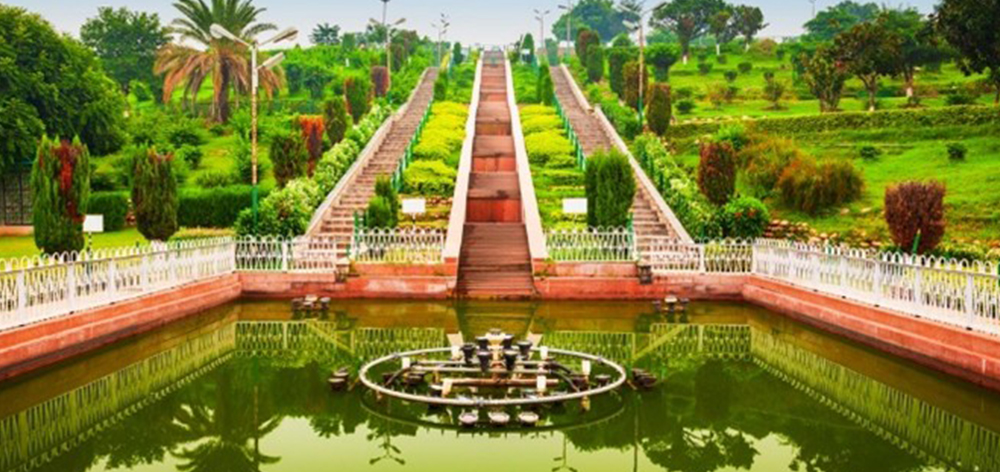
Accessing the unexplored beauty of Jammu will soon be easier
India’s Jammu region is a treasure trove of ancient history, vibrant culture, and breathtaking natural beauty that attracts tourists and travel enthusiasts. The region’s monumental heritage, including forts, palaces, and mansions, has captivated visitors for centuries, offering a glimpse into a bygone era. Dating back to the 2nd century AD, Jammu’s built heritage boasts an array of Buddhist stupas, ancient temples, and forts that stand as testaments to its rich past. One of the most significant archaeological sites in the region is Akhnoor, situated 28 km from Jammu at the foothills of the majestic Himalayas and along the banks of the Chenab River. 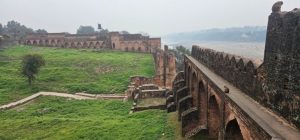 Excavations conducted by the Archaeological Survey of India have revealed that Akhnoor was a crucial bastion of the Harappan Civilization, with terracotta figures and anthropological objects from the later Harappan Period unearthed during the excavations. Notably, no evidence suggests that the Harappans ventured beyond Akhnoor into the upper hilly areas joining the Shivalik Hills, making this site a unique and fascinating piece of history.
Excavations conducted by the Archaeological Survey of India have revealed that Akhnoor was a crucial bastion of the Harappan Civilization, with terracotta figures and anthropological objects from the later Harappan Period unearthed during the excavations. Notably, no evidence suggests that the Harappans ventured beyond Akhnoor into the upper hilly areas joining the Shivalik Hills, making this site a unique and fascinating piece of history.
Exploring all these wonderful destinations will get easier in the near future once National Highways & Infrastructure Corporation Ltd (NHIDCL) completes upgrading the Jammu-Akhnoor stretch of the NH-144A. This will facilitate travellers to explore the entire region and discover the hidden treasures of Jammu, where ancient history, culture, and natural beauty blend seamlessly, waiting to be explored and cherished. Some of the important tourist locations waiting to be explored and experienced by travellers include Bagh-e-Bahu, Bawe Wali Mata Temple, Mubarak Mandi, Amar Mahal Palace, Suchetgarh, Ambaran, Jhajjar Kotli, Bani, Jasrota, and several other scenic and historical locales. Bagh-e-Bahu:
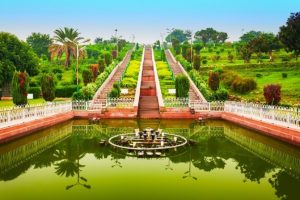
It is a fortress with a wonderful garden that reflects the grandeur of the royal family of Dogra kings who resided here. Pilgrims also visit the Bahu temple inside the fortress on Tuesdays and Sundays. The fortress and the temple offer a breathtaking panoramic view of Jammu. Bawe Wali Mata Temple: The Temple is a revered place in Jammu. It is located within the premises of Bahu Fort and is considered one of the city’s most sacred and powerful shrines. The shrine houses a black-coloured idol of Goddess Mahakali. Mubarak Mandi:
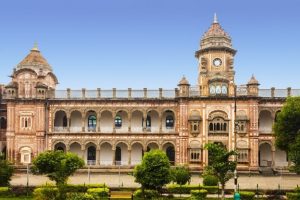
Steeped in history, the Mubarak Mandi Complex, also known as the Royal Dogra Palace, stands as a testament to the region’s rich cultural heritage. With a history spanning over 150 years, this magnificent structure showcases a unique blend of architectural styles, including Baroque, Mughal, Rajasthani, and European, making it a major tourist attraction. The complex boasts several notable sections, including: – Sheesh Mahal: A dazzling hall of mirrors – Rani Charak Mahal: A majestic palace – Old Army Headquarters: A historic military hub – Foreign Office: A symbol of diplomatic significance – Grey Hall: The Maharaja’s Darbar hall The Mubarak Mandi Complex is also home to the renowned Dogra Art Gallery, housed in the erstwhile Pink Hall. This treasure trove of art features: – Miniature paintings from traditional Hill Schools of Art – Rare pictures from the Jammu, Kangra, and Basohli Schools of Art – A gold bow and arrow of Mughal king Shah Jehan – Hand-written Persian manuscripts of Shahnama and Sikandernama Amar Mahal Palace:
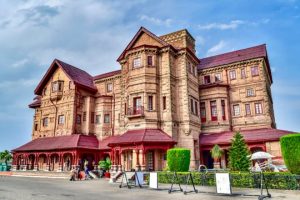
Perched on a hill overlooking the serene Tawi River, the Amar Mahal Palace is a stunning architectural gem that evokes the grandeur of a French Chateau. Crafted from red sandstone, this beautiful palace stands majestically amidst the picturesque horizons of Jammu, offering breathtaking views of the surrounding landscape. Once the majestic residence of Raja Amar Singh, the palace has been meticulously converted into a museum, now under the care of the Hari-Tara Charitable Trust. The museum showcases an array of treasures, including: – The golden throne: A masterpiece weighing 120 kg of pure gold, where the Maharaja once sat – Painting gallery: A vibrant showcase of artistic expression – Library: A vast collection of around 25,000 books, spanning various subjects and disciplines Ambaran: Located in the Akhnoor tehsil of Jammu district, Ambaran is a village with a rich cultural heritage. Founded by the Amba Jagdev Pawar dynasty of Dhar Ujjain, the village is named after the family deity Amba, a manifestation of the goddess Durga. Ambaran holds great significance in the annals of Buddhism, having served as a major centre from the 1st to the 7th century B.C. Archaeological excavations have unearthed a treasure trove of artifacts, including: – Terracotta figures – Small sculptures – Pottery – Burnt brick structures These findings span various periods of human settlements, including: – Pre-Kushana period (2nd Century BC) – Kushana period – Gupta period – Post-Kushana period In a nutshell, the new alignment on the NH-144A, which is being built by NHIDCL will transform the lives and socio-economic condition of the region. Residents will enjoy reduced travel time, improved road safety, and enhanced connectivity to major cities. Access to better healthcare, education, and employment opportunities will improve the overall quality of life.







